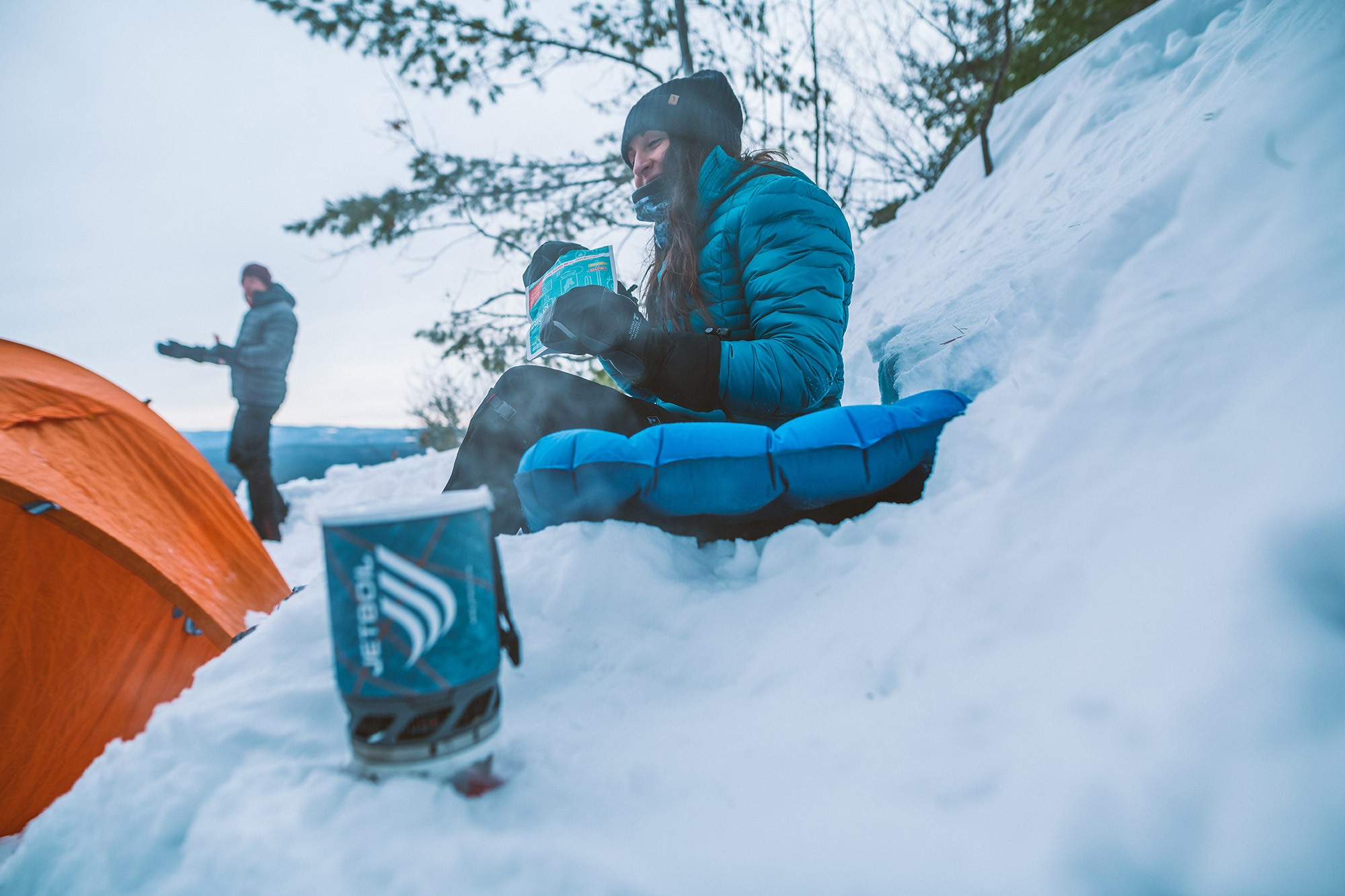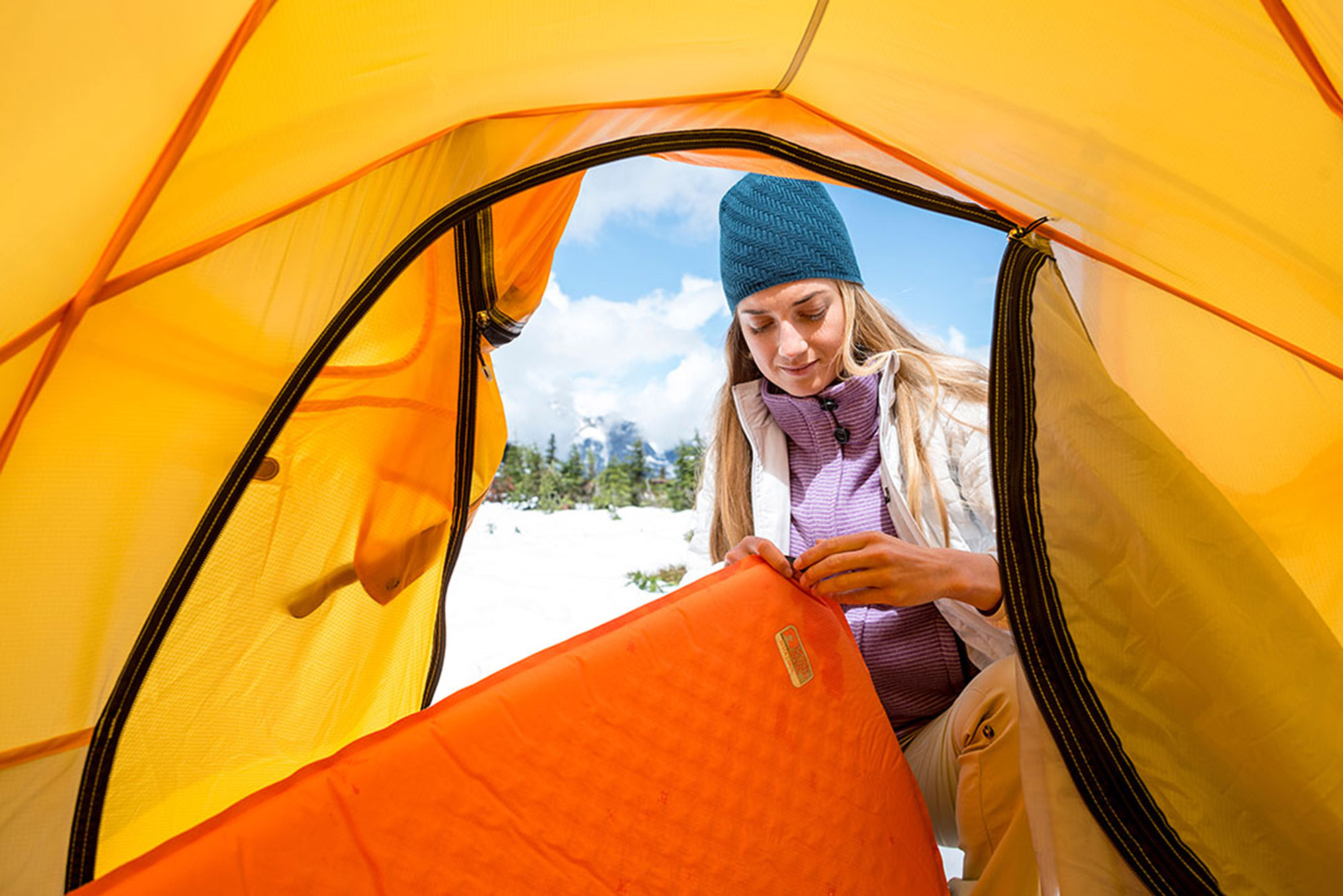Shopping for sleeping pads is about to get a whole lot easier.
The second law of thermodynamics states that heat will naturally flow from hot to cold. Without getting too nerdy, this is why we use sleeping bags while camping: They slow down that heat transfer from hot (you and your body) to cold (the outside air). Unfortunately, a sleeping bag is only as good as its loft, and when your body compresses the bag between you and the ground, all of your body heat will easily be lost into the ground. Enter the sleeping pad.

What does a sleeping pad do?
At first glance to novice campers and backpackers, the sleeping pad just a poor excuse for a mattress, attempting to make the sticks and rocks less noticeable, but it’s real function is to thermally insulate your body from the cold ground. But how well a particular sleeping bag does that job has been hard to quantify.
For many years, sleeping pads were rated in a similar fashion to sleeping bags: with temperature ranges. The problem with this method is that its subjective to both the manufacturer and the user so there is no way to accurately compare the warmth of sleeping pads between brands. Also, a sleeping pad insulates you from ground temperature, which can be very different from the air temperature, and is more difficult to forecast or predict.
More recently, pads have been rated using a number called the “R-Value,” which is a method of rating thermal resistance (how well a material insulates against conductive, or contact, heat transfer). This universal method of rating insulation can now be used to compare the insulating properties of almost any material or product! The problem? Until now, it hasn’t actually been universal. Brands tested their pads to find the R-value using a variety of different techniques and without a standardized method, the numbers listed on sleeping pads were often hard to compare and make sense of—some brands opted to not include an R-value at all.
But, at the end of last year, a coalition of industry brands announced that they would be standardizing the R-value tests and requiring that all pads list the new, easier to understand number by 2020.

So, how will it work?
So how will the R-Value for a mattress be figured out? A thermal testing rig which contains a hot and cold side is set up with the mattress sandwiched in between the two sides. The hot side is heated with an electric coil, and the amount of energy required to keep the hot side at a constant temperature is measured. A mattress that insulates well, will let the heating coil use less energy to maintain the set temperature because less heat is being conducted through the mattress to the cold side. This measured amount of energy is then converted with some fun math equations into the R-Value that will be assigned to that specific mattress.
Thankfully many of the gear companies have already done much of the legwork for you and have come up with some recommended R-Value ranges for the season or warmth you might be looking for:
| “Season” | Summer | 3-Season | Winter | Extreme Cold |
| Recommended R-Value | 1+ | 2+ | 3+ | 5+ |
Much like a sleeping bag, the trade off of increasing R-Value is increasing the weight. A high R-Value sleeping pad will naturally weigh more than a sleeping pad with a lower R-Value using the same material technology.
The good news for consumers who don’t want to own a different sleeping pad for every season, is that R-value is simply added together linearly in order to increase its insulating properties. For example, this means you can stack an inflatable mattress with an R-value of 3 on top of a closed cell foam mattress with an R-value of 2 and have the equivalent of a new mattress with an R-value of 5!
You may be asking yourself why any of this matters. After all, if a company tells you that a mattress is rated for 15 degree weather, why not believe them? The true advantage of incorporating a standardized method of rating is being able to compare mattresses from different companies and not having to worry about marketing tactics or personal bias. Relying on a scientific standard for rating the insulating properties of camping mattresses lets you, the camper, make informed and complete decisions on how to spend your hard earned money.
Aaron Courain
Aaron Courain is a mechanical engineer by trade as well as an aspiring husband, who grew up in northern New Jersey. He is a team member of the New York Adventure Racing Association, which allows him to be “just ok” at multiple sports, instead of really good at one. Climbing and adventure racing has provided a constant challenge and outlet for outdoor pursuits, while living in NJ has forced him to get creative about fitting as much outdoors time as possible into the daily grind.




